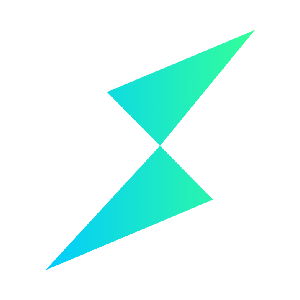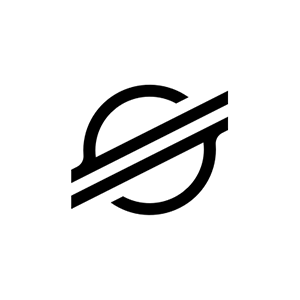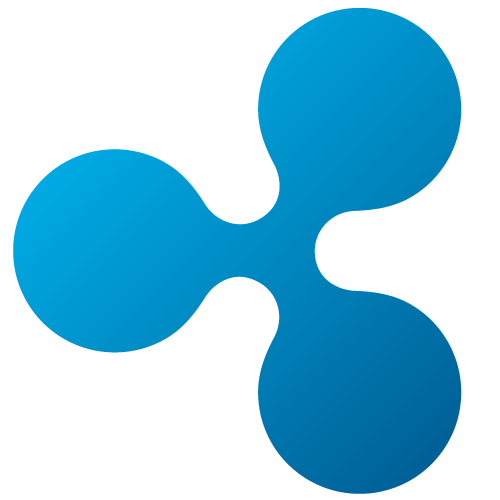Top 50 Crypto Coins List













































What is Cryptocurrency?
A cryptocurrency is a digital or virtual currency designed to work as a medium of exchange. It uses cryptography to secure and verify transactions as well as to control the creation of new units of a particular cryptocurrency. Essentially, cryptocurrencies are limited entries in a database that no one can change unless specific conditions are fulfilled. Cryptocurrency is a form of digital money that is designed to be secure and, in many cases, anonymous. It is a currency associated with the Internet that uses cryptography, the process of converting legible information into an almost uncrackable code, to track purchases and transfers. It uses a decentralized control as opposed to centralized electronic money and central banking systems. The decentralized control of each cryptocurrency works through a blockchain, which is a public transaction database, functioning as a distributed ledger. Within cryptocurrency systems the safety, integrity and balance of ledgers is maintained by a community of mutually distrustful parties referred to as miners. People using cryptocurrencies like Bitcoin to render secondary market transactions. The most popular secondary market transaction today is as it was when BTC first premiered: buying drugs and other illicit goods on the dark web. However, individuals in other countries like Venezuela have used BTC to transact purchases given their domestic currency is suffering from hyperinflation.
Types of Cryptocurrencies
Bitcoin is the first decentralized ledger currency. It is the cryptocurrency with the most famous, popular, notable and highest market capitalization. It was invented in 2009. Currently, Litecoins, Dogecoins and Feathercoins are said to be the best cryptocurrencies in terms of being cost-effective for beginners. Here are the most famous types of cryptocurrencies:
-
Bitcoin,
-
Litecoin,
-
Ethereum,
-
Dogecoin,
-
Dash.
Bitcoin (BTC)
Bitcoin ( BTC) is a cryptocurrency and worldwide payment system. It is the first decentralized digital currency, as the system works without a central bank or single administrator. The network is peer-to-peer and transactions take place between users directly, without an intermediary. These transactions are verified by network nodes through the use of cryptography and recorded in a public distributed ledger called a blockchain. Bitcoin was invented by an unknown person or group of people under the name Satoshi Nakamoto and released as open-source software in 2009.
Litecoin (LTC)
Litecoin (LTC) is a peer-to-peer cryptocurrency and open source software project released under the MIT/X11 license. Litecoin was released via an open-source client on GitHub on October 7, 2011 by Charlie Lee, a former Google employee. The Litecoin network went live on October 13, 2011. It was a fork of the Bitcoin Core client, differing primarily by having a decreased block generation time (2.5 minutes), increased maximum number of coins, different hashing algorithm (scrypt, instead of SHA-256), and a slightly modified GUI. The Litecoin Network aims to process a block every 2.5 minutes, rather than Bitcoin’s 10 minutes. The developers claim that this allows Litecoin to have faster transaction confirmation.
Ethereum (ETH)
Launched in 2015, Ethereum is a decentralized software platform that enables Smart Contracts and Distributed Applications to be built and run without any downtime, fraud, control or interference from a third party. During 2014, Ethereum had launched a pre-sale for ether which had received an overwhelming response. The applications on Ethereum are run on its platform-specific cryptographic token, ether. Ether is like a vehicle for moving around on the Ethereum platform, and is sought by mostly developers looking to develop and run applications inside Ethereum. According to Ethereum, it can be used to “codify, decentralize, secure and trade just about anything.” Following the attack on the DAO in 2016, Ethereum was split into Ethereum (ETH) and Ethereum Classic (ETC).
Dogecoin
Dogecoin was created by programmer Billy Markus from Portland, Oregon, who hoped to create a fun cryptocurrency that could reach a broader demographic than bitcoin. On December 19, 2013, Dogecoin jumped nearly 300 percent in value in 72 hours, rising from US$0.00026 to $0.00095, with a volume of billions of Dogecoins per day. This growth occurred during a time when Bitcoin and many other cryptocurrencies were reeling from China’s decision to forbid Chinese banks from investing into the Bitcoin economy.
Dash
Dash (originally known as Darkcoin) is a more secretive version of Bitcoin. Dash offers more anonymity as it works on a decentralized mastercode network that makes transactions almost untraceable. Launched in January 2014, Dash experienced an increasing fan following in a short span of time. This cryptocurrency was created and developed by Evan Duffield and can be mined using a CPU or GPU. In March 2015, ‘Darkcoin’ was re-branded to Dash, which stands for Digital Cash and operates under the ticker — DASH. The rebranding didn’t change any of its technological features such as Darksend, InstantX.
Cryptocurrency Mining Types
Is cryptocurrency mining profitable? There is no single-valued response to the question. Mining is the process of adding transaction records to Bitcoin’s public ledger of past transactions and a “mining rig” is a colloquial metaphor for a single computer system that performs the necessary computations for “mining”. This ledger of past transactions is called the blockchain as it is a chain of blocks. The blockchain serves to confirm transactions to the rest of the network as having taken place. Bitcoin nodes use the blockchain to distinguish legitimate Bitcoin transactions from attempts to re-spend coins that have already been spent elsewhere. Mining is also the mechanism used to introduce Bitcoins into the system. Cryptocoin miners are paid any transaction fees as well as a “subsidy” of newly created coins. This both serves the purpose of disseminating new coins in a decentralized manner as well as motivating people to provide security for the system. All of the miners in the network are searching for a solution that fits the difficulty criteria and they do so by processing running their mining rigs to try and find the solution. This is why its called proof of work as its proof is the probability of finding a correct solution usually takes an average of ten minutes. With mining, it is important to understand the different types of blocks that come with it because of the effect it can have on your expected income. As there is no central authority or central bank, there has to be a way of gathering every transaction carried out with a cryptocurrency in order to create a new block. Network nodes that carry out this task called dubbed ’miners’. Every time a slew of transactions is amassed into a block, this is appended to the blockchain. Whoever appends the block gets rewarded with some of that cryptocurrency.
Cloud Mining is the process of cryptocurrency mining utilizing a remote datacenter with shared processing power. This type of mining enables users to mine bitcoins or alternative cryptocurrencies without managing the hardware. The mining rigs are housed and maintained in a facility owned by mining company and the customer simply needs to register and purchase mining contracts or shares. Since Cloud Mining is provided as a service there is generally some cost and this can result in lower returns for the miner.
Risk of Cryptocurrency Mining
In the long-run the rewards can certainly be big but there is a lot at risk when you mine for cryptocoins:
- Losing your digital wallet of coins. You can lose your wallet either by locking yourself out by forgetting your password or by physically losing the wallet via a broken hard drive or if your online wallet provider goes out of business.
- Susceptible to High Price Volatility. The main issue that comes with bitcoin mining is the fluctuation of the virtual currency. The cryptocurrency tends to swing over short periods of time. Also, the price depends on the demand and supply, since there are only 21 million Bitcoins available and with two-thirds of it to be already mined, the demand of bitcoins increases with each passing day.
- Competition due to the introduction of new cryptocurrency. The reward for mining bitcoins about every four years and its current value is at 12.5 bitcoins, with average block time as 10 minutes. Whereas Ethereum’s block time is 12 seconds. Faster block time means quicker confirmation of transactions. Ethereum reward miners work to earn Ethers, which is a kind of token that fuels the network. You earn 5 ethers given for each block. You can also use it to pay for transaction fee and services on the Ethereum network. Also, Ethereum has over 89,752,192 coins currently existing, unlike Bitcoin, if it reaches its limit, more investors would switch to Ethereum or other cryptocurrencies thus, leading to lesser or no transactions for miners to confirm and earn rewards.
Referral Programs for Earning Cryptocurrencies
Affiliate marketing, in which you promote a product or service and earn commission on every new customer you refer, is one of the easiest ways to start earning money online. Of course that’s not to say that it is easy to make a lot of money, but it does have the advantage that anybody can do it. Types of referral program:
- Product Affiliate Programs,
- Exchanges,
- Advertising Networks,
- Gambling,
- Trading & Investment,
- Games,
- Technology.






 assets/images/blog/small_pics/btc_eth_1.jpg
assets/images/blog/small_pics/btc_eth_1.jpg
 assets/images/blog/small_pics/scammer_1.jpg
assets/images/blog/small_pics/scammer_1.jpg
 assets/images/blog/small_pics/ethereum_1.jpg
assets/images/blog/small_pics/ethereum_1.jpg
 assets/images/blog/small_pics/Hashflare-Bitcoin-Calculator-small.jpg
assets/images/blog/small_pics/Hashflare-Bitcoin-Calculator-small.jpg